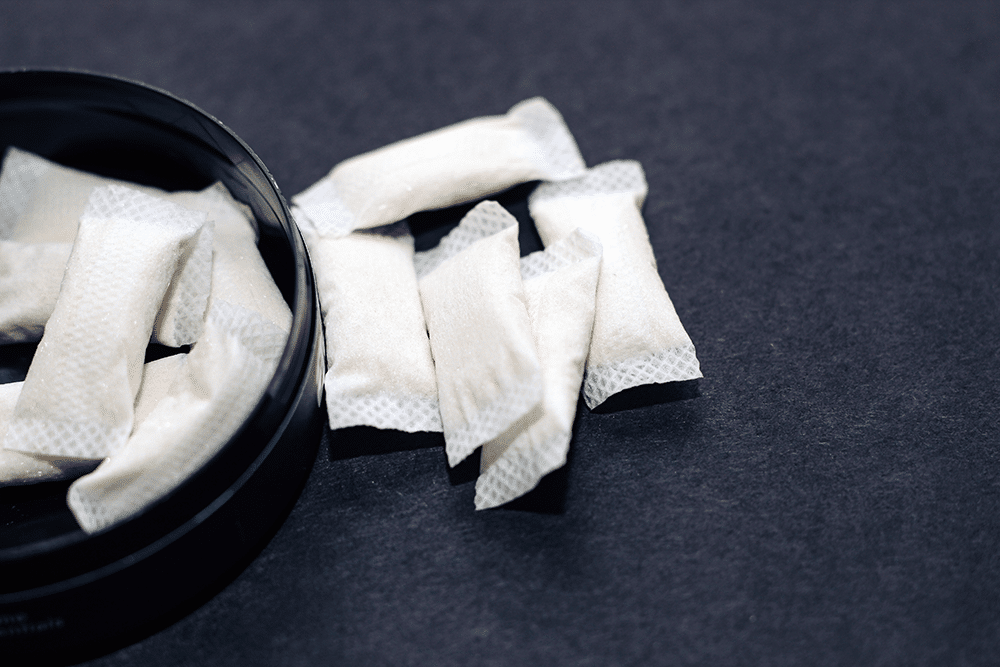Tobacco & Nicotine Harm Reduction

George Hardie
Executive Director, Tobacco Harm Reduction Research
George Hardie, Executive Director of Tobacco Harm Reduction Research, has over 37 years of experience in Inhalation Toxicology and clinical research. He possesses extensive knowledge of respiratory disease and tobacco harm reduction. Previously, George served as the head of clinical research for a major tobacco company and has authored/co-authored 20 peer-reviewed papers on tobacco harm reduction.
In 2017, the FDA set forth an initiative to significantly reduce tobacco-related disease and death, placing nicotine and the issue of addiction at the center of the Agency’s tobacco regulation efforts. This initiative encouraged the development of innovative tobacco products that may be less dangerous than cigarettes. Furthermore, a key element of the FDA’s approach is in increasing awareness that nicotine, while still highly addictive, is most harmful when delivered through smoke particles in combustible cigarettes (1).
To that end, in order to introduce a new tobacco or nicotine product into the marketplace, companies must receive an authorization from the FDA after submitting an application. Applications are thoroughly evaluated in order to determine whether the new products meet relevant standards.
Requirements for New Tobacco/Nicotine Products
There are currently three pathways to market new tobacco products (2):
Premarket Tobacco Product Applications (PMTA): Must prove that the new product would be “appropriate for the protection of the public health.” The FDA’s Final Rule for Premarket Tobacco Product Applications and Recordkeeping Requirements states, “The rule requires an applicant to submit detailed information regarding the physical aspects of its new tobacco product and full reports of information regarding investigations that may show the health risks of the new tobacco product and whether it presents the same or different risks compared to other tobacco products (3).”
When reviewing PMTAs, the FDA considers the following items (4):
- Risks and benefits to the population, including people who would be likely to use the new product as well as nonusers
- The likelihood that current users of tobacco products would stop using them if the proposed product becomes available
- Whether nonusers would become more or less likely to begin using tobacco products if the proposed product becomes available
To read the full FDA guidance document for Premarket Tobacco Product Applications, click here.
Substantial Equivalence (SE): In this pathway, a new product is determined to be “substantially equivalent” to a product that is already available in the market by proving it has the same characteristics as that predicate product. Alternately, if the product has different characteristics, it must demonstrate that it does not raise different public health questions as does the existing product.
Request Exemption from Demonstrating Substantial Equivalence (EX REQ): This pathway is for products that have been modified by adding or removing an additive or by increasing/decreasing the quantity of an existing tobacco additive within a product.
Requirements for New Tobacco/Nicotine Products
There are currently three pathways to market new tobacco products (2):
Premarket Tobacco Product Applications (PMTA): Must prove that the new product would be “appropriate for the protection of the public health.” The FDA’s Final Rule for Premarket Tobacco Product Applications and Recordkeeping Requirements states, “The rule requires an applicant to submit detailed information regarding the physical aspects of its new tobacco product and full reports of information regarding investigations that may show the health risks of the new tobacco product and whether it presents the same or different risks compared to other tobacco products (3).”
When reviewing PMTAs, the FDA considers the following items (4):
- Risks and benefits to the population, including people who would be likely to use the new product as well as nonusers
- The likelihood that current users of tobacco products would stop using them if the proposed product becomes available
- Whether nonusers would become more or less likely to begin using tobacco products if the proposed product becomes available

To read the full FDA guidance document for Premarket Tobacco Product Applications, click here.
Substantial Equivalence (SE): In this pathway, a new product is determined to be “substantially equivalent” to a product that is already available in the market by proving it has the same characteristics as that predicate product. Alternately, if the product has different characteristics, it must demonstrate that it does not raise different public health questions as does the existing product.
Request Exemption from Demonstrating Substantial Equivalence (EX REQ): This pathway is for products that have been modified by adding or removing an additive or by increasing/decreasing the quantity of an existing tobacco additive within a product.
Modified Risk Tobacco Product (MRTP)
Your content goes here. Edit or remove this text inline or in the module Content settings. You can also style every aspect of this content in the module Design settings and even apply custom CSS to this text in the module Advanced settings.
For sponsors who seek to market a tobacco product with reduced risk, they must submit an MRTP application. For the FDA to issue an exposure modification order, the application must demonstrate a substantial reduction of harmful substances within the product and that there is an actual reduction in the exposure of that substance to consumers. Furthermore, the product must not expose consumers to higher levels of other harmful substances compared with currently available products. As stated in the FDA’s draft guidance document, the “issuance of the exposure modification order is expected to benefit the health of the population as a whole taking into account both users of tobacco products and persons who do not currently use tobacco products (5).”
To read the full FDA guidance document for Modified Risk Tobacco Product Applications click here.
Reach Out Today
Dr. Vince Clinical Research (DVCR) is well-positioned to support clinical programs for tobacco/nicotine products that are required for PMTA and MRTP submissions. Our full-service offering allows us to provide a turn-key solution to our tobacco/nicotine sponsors, allowing us to streamline the process. If you would like receive more information about how our contract research organization can support your upcoming tobacco or nicotine clinical trial please contact us.
Modified Risk Tobacco Product (MRTP)
For sponsors who seek to market a tobacco product with reduced risk, they must submit an MRTP application. For the FDA to issue an exposure modification order, the application must demonstrate a substantial reduction of harmful substances within the product and that there is an actual reduction in the exposure of that substance to consumers. Furthermore, the product must not expose consumers to higher levels of other harmful substances compared with currently available products. As stated in the FDA’s draft guidance document, the “issuance of the exposure modification order is expected to benefit the health of the population as a whole taking into account both users of tobacco products and persons who do not currently use tobacco products (5).”
To read the full FDA guidance document for Modified Risk Tobacco Product Applications click here.

DVCR’s Solution for Tobacco and Nicotine Harm Reduction
DVCR operates a 90-bed clinical unit located in the Kansas City Metropolitan and has a team of experienced professionals that have conducted a large number of tobacco and nicotine studies with numerous types of products.
Housed within the facility are 7 indoor smoking rooms (2 large and 5 individual), each equipped with advanced air handling and ventilation/filtration to allow us to conduct these unique types of studies at our site. Using these rooms, we are able to collect PK data while volunteers are using products. We also maintain a dedicated Ad-Lib smoking room which is designed for volunteers to use products as if they were in their own homes for studies requiring ad-lib smoking sessions.
Our 2,500 sq. ft. pharmacy contains a dedicated area for the preparation of the harm reduction products and has the necessary equipment to weigh products both pre and post-dose. Our pharmacists average over 5 years’ experience handling tobacco and nicotine products.
DVCR also has established an external site network of sites with a proven track record of undertaking nicotine and tobacco harm reduction studies that DVCR might require for a multi-site approach. When this is the case, DVCR has a robust feasibility and qualification process to ensure that only the most qualified sites are participating in your study to ensure recruitment milestones and study deliverables are met on time.
For nicotine PK samples and tobacco biomarkers, we maintain a strategic partnership with a bioanalytical laboratory that has deep experience in this field. Their services include application of bioanalytical methods for biomarker analysis, development of new bioanalytical methods, and method validation according to FDA guidelines. They also provide biomarker analysis for tobacco harm reduction, chemical risk assessment, metabolomics and metabolite identification.
Your content goes here. Edit or remove this text inline or in the module Content settings. You can also style every aspect of this content in the module Design settings and even apply custom CSS to this text in the module Advanced settings.
DVCR’s Solution for Tobacco and Nicotine Evaluation
DVCR operates a 90-bed clinical unit located in the Kansas City Metropolitan and has a team of experienced professionals that have conducted a large number of tobacco and nicotine studies with numerous types of products.
Housed within the facility are 7 indoor smoking rooms (2 large and 5 individual), each equipped with advanced air handling and ventilation/filtration to allow us to conduct these unique types of studies at our site. Using these rooms, we are able to collect PK data while volunteers are using products. We also maintain a dedicated Ad-Lib smoking room which is designed for volunteers to use products as if they were in their own homes for studies requiring ad-lib smoking sessions.

Our 2,500 sq. ft. pharmacy contains a dedicated area for the preparation of the harm reduction products and has the necessary equipment to weigh products both pre and post-dose. Our pharmacists average over 5 years’ experience handling tobacco and nicotine products.
DVCR also has established an external site network of sites with a proven track record of undertaking nicotine and tobacco harm reduction studies that DVCR might require for a multi-site approach. When this is the case, DVCR has a robust feasibility and qualification process to ensure that only the most qualified sites are participating in your study to ensure recruitment milestones and study deliverables are met on time.
For nicotine PK samples and tobacco biomarkers, we maintain a strategic partnership with a bioanalytical laboratory that has deep experience in this field. Their services include application of bioanalytical methods for biomarker analysis, development of new bioanalytical methods, and method validation according to FDA guidelines. They also provide biomarker analysis for tobacco harm reduction, chemical risk assessment, metabolomics and metabolite identification.
We leverage specialized medical writing services for tobacco/nicotine clinical studies including:

Full study design, synopsis and protocol development

CSR writing

Review of Statistical Analysis Plans (SAPs), source documents, database requirements

Support with regulatory interactions including correspondence, briefing documents, and preparation and attendance at meetings with regulatory authorities

Scientific writing including literature reviews and clinical study reports for behavioral science
We leverage specialized medical writing services for tobacco/nicotine clinical studies including:

Full study design, synopsis and protocol development

CSR writing

Review of Statistical Analysis Plans (SAPs), source documents, database requirements

Support with regulatory interactions including correspondence, briefing documents, and preparation and attendance at meetings with regulatory authorities

Scientific writing including literature reviews and clinical study reports for behavioral science
We leverage specialized medical writing services for tobacco/nicotine clinical studies including:

Full study design, synopsis and protocol development

Review of Statistical Analysis Plans (SAPs), source documents, database requirements

Scientific writing including literature reviews and clinical study reports for behavioral science

Support with regulatory interactions including correspondence, briefing documents, and preparation and attendance at meetings with regulatory authorities

CSR writing
Tobacco and Nicotine Clinical Study Experience
DVCR has experience conducting a wide range of tobacco and nicotine clinical studies such as:

Abuse Liability: (AL) - Abuse Liability Assessment (ALA)
Predicts the likelihood that the use of the tobacco product would result in addiction and be used repeatedly or sporadically resulting in undesirable effects. Abuse liability evaluations should consider both the addictiveness and abuse/misuse potential of the new product as well as exposure to nicotine during product use (6).

Biomarkers of Exposure (BoE)
The use of tobacco products results in the uptake of nicotine and a wide range of other chemicals. These chemicals and their metabolites, measured in bodily fluids and tissues, constitute biomarkers of exposure

Other PK/PD studies
PK: What the body does to investigational product
PD: What the investigational product does to the body

Biomarkers of Potential Harm (BoPH)
Measures short-term health effects such as inflammation and oxidative stress

Bioequivalence (BE)
Comparing two different products to demonstrate they are equivalent

Topography
How individual users consume the product, i.e., the number of puffs, puff duration, puff intensity, duration of use, etc
References
1 FDA announces comprehensive regulatory plan to shift trajectory of tobacco-related disease, death. (2018, March 28). FDA News Release. Retrieved June 26, 2023, from https://www.fda.gov/news-events/press-announcements/fda-announces-comprehensive-regulatory-plan-shift-trajectory-tobacco-related-disease-death.
2 Products, C. for T. (2022, April 11). Market and distribute a tobacco product. U.S. Food and Drug Administration. https://www.fda.gov/tobacco-products/products-guidance-regulations/market-and-distribute-tobacco-product
3 Premarket Tobacco Product Applications and Recordkeeping Requirements, 21 C.F.R. § 1100, 1107, 1114 (2021). https://www.federalregister.gov/documents/2021/10/05/2021-21011/premarket-tobacco-product-applications-and-recordkeeping-requirements
4 Products, C. for T. (2023, April 11). Premarket tobacco product applications. U.S. Food and Drug Administration. https://www.fda.gov/tobacco-products/market-and-distribute-tobacco-product/premarket-tobacco-product-applications
5 Products, C. for T. (2020, February 13). Modified risk tobacco product applications. U.S. Food and Drug Administration. https://www.fda.gov/regulatory-information/search-fda-guidance-documents/modified-risk-tobacco-product-applications
6 U.S. Department of Health and Human Services Food and Drug Administration Center for Tobacco Products. (2023, March). Premarket tobacco product applications for electronic nicotine delivery … https://www.fda.gov/media/127853/download
Tobacco and Nicotine Clinical Study Experience
DVCR has experience conducting a wide range of tobacco and nicotine clinical studies such as:

Abuse Liability: (AL) - Abuse Liability Assessment (ALA)
Predicts the likelihood that the use of the tobacco product would result in addiction and be used repeatedly or sporadically resulting in undesirable effects. Abuse liability evaluations should consider both the addictiveness and abuse/misuse potential of the new product as well as exposure to nicotine during product use (6).

Biomarkers of Exposure (BoE)
The use of tobacco products results in the uptake of nicotine and a wide range of other chemicals. These chemicals and their metabolites, measured in bodily fluids and tissues, constitute biomarkers of exposure

Other PK/PD studies
PK: What the body does to investigational product
PD: What the investigational product does to the body

Biomarkers of Potential Harm (BoPH)
Measures short-term health effects such as inflammation and oxidative stress

Bioequivalence (BE)
Comparing two different products to demonstrate they are equivalent

Topography
How individual users consume the product, i.e., the number of puffs, puff duration, puff intensity, duration of use, etc
References
1 FDA announces comprehensive regulatory plan to shift trajectory of tobacco-related disease, death. (2018, March 28). FDA News Release. Retrieved June 26, 2023, from https://www.fda.gov/news-events/press-announcements/fda-announces-comprehensive-regulatory-plan-shift-trajectory-tobacco-related-disease-death.
2 Products, C. for T. (2022, April 11). Market and distribute a tobacco product. U.S. Food and Drug Administration. https://www.fda.gov/tobacco-products/products-guidance-regulations/market-and-distribute-tobacco-product
3 Premarket Tobacco Product Applications and Recordkeeping Requirements, 21 C.F.R. § 1100, 1107, 1114 (2021). https://www.federalregister.gov/documents/2021/10/05/2021-21011/premarket-tobacco-product-applications-and-recordkeeping-requirements
4 Products, C. for T. (2023, April 11). Premarket tobacco product applications. U.S. Food and Drug Administration. https://www.fda.gov/tobacco-products/market-and-distribute-tobacco-product/premarket-tobacco-product-applications
5 Products, C. for T. (2020, February 13). Modified risk tobacco product applications. U.S. Food and Drug Administration. https://www.fda.gov/regulatory-information/search-fda-guidance-documents/modified-risk-tobacco-product-applications
6 U.S. Department of Health and Human Services Food and Drug Administration Center for Tobacco Products. (2023, March). Premarket tobacco product applications for electronic nicotine delivery … https://www.fda.gov/media/127853/download
